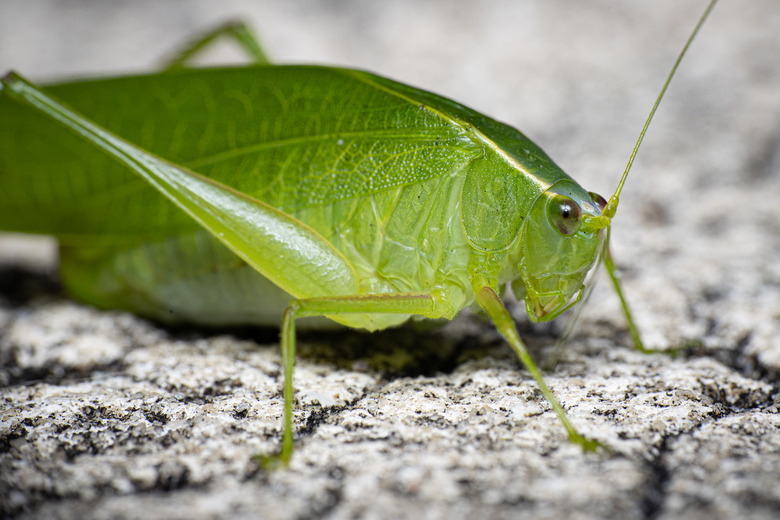Life Cycle Of A Katydid
Have you gone outside on a warm summer's night and heard a rhythmic, staccato rasping coming from the trees? Chances are, you were listening to the katydid song, which is often produced by groups of male katydids in hopes of attracting females for reproductive purposes. Their chirping signal is the first step to creating the next season of large, leafy green katydids.
Katydid Mating Process
Female katydids follow the serenading sound of their male counterparts, and then they're wooed with a hearty meal. This meal, or spermatophylax, is passed to the female at the end of mating, and she eats it only after receiving a sperm-filled sack from the male katydid.
Researchers have found that the spermatophylax may serve two purposes. First, it's a parental investment from the male katydid to ensure the female has enough nutrition to produce many eggs. Second, the time it takes the female to eat the post-reproduction snack makes her less available to mate with other katydids, cutting down on sperm competition.
Katydid Egg-Laying
At the end of summer, female katydids lay their oval, gray eggs on leaves, stems, and on the ground with the use of a special organ on the abdomen called an ovipositor. These eggs must survive in a dormant state through the winter to hatch in the spring. By the time the next generation of katydids come around, their parents and all the previous generation will likely have died.
Katydid Nymph Stage
When the eggs hatch, these katydids are not yet in their final form. They emerge without wings and go through five molts. Some katydids look quite different from others; for instance, they may be pink due to a coloring mutation similar to other albino animal and insect species. Scientists estimate about every 1 in 500 katydids hatches as a pink insect.
Throughout the spring and summer, you may find a katydid somewhere in its nymph stage chewing on the plants in your garden. Katydids belong to the order Orthoptera for their ability to chew. Other Orthoptera examples include locusts, crickets, and grasshoppers.
There's no need to worry too much about katydids around your plants. They don't cause enough damage to be considered a garden pest, and they can even eat aphids, a true pest that can plague your plants.
Katydid Adult Stage
Once the katydid has fully grown its wings, it's considered an adult. The molting process is finished, and the katydid spends its days blending into plants and treetops. Its wings are used to communicate for territorial purposes, defensive purposes, and to start the process of reproduction all over again for the next year. Adult katydids do not live into the winter season, and their entire life cycle concludes in about a year.
